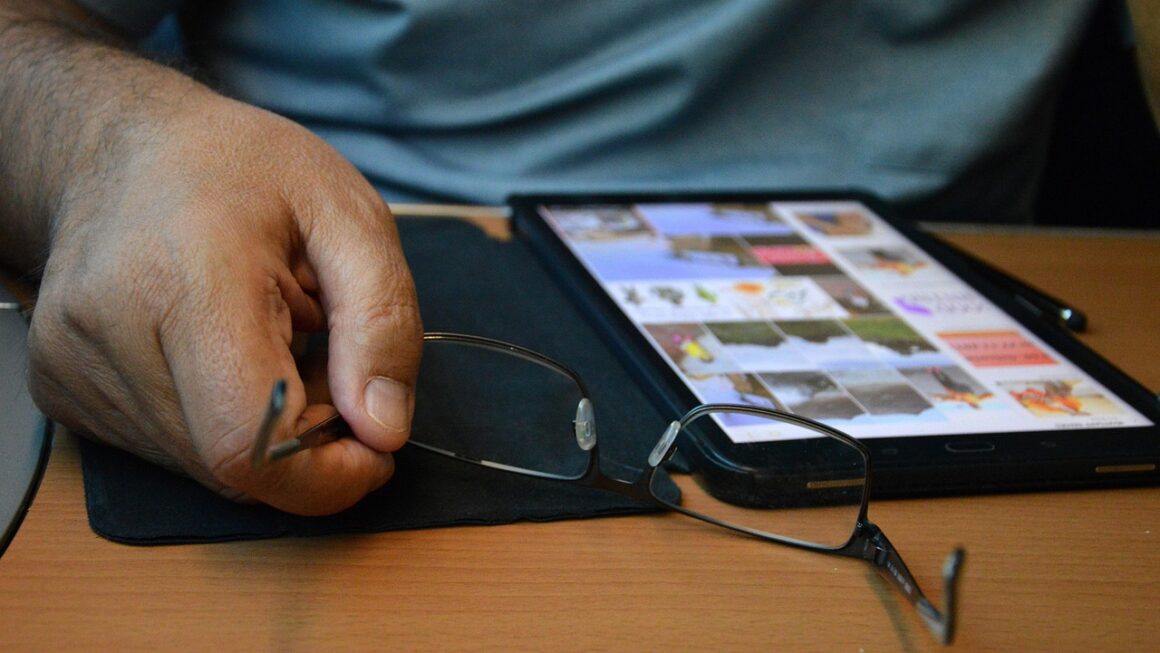Striking the perfect chord between professional success and personal fulfillment can often feel like chasing a mirage. The modern world demands our attention across multiple fronts, leaving us stretched thin and yearning for that elusive equilibrium: work-life balance. But what does work-life balance really mean, and how can we actively cultivate it in our daily lives? This post delves into the core principles of achieving a harmonious integration between our professional responsibilities and our personal well-being, offering practical strategies and actionable insights to help you reclaim control and live a more balanced life.
Understanding Work-Life Balance
Defining Work-Life Balance
Work-life balance isn’t about rigidly dividing your time equally between work and personal life. It’s about creating a sustainable lifestyle where you feel fulfilled and energized in both areas. It’s a dynamic and individual experience, constantly shifting and requiring conscious adjustment based on your priorities and circumstances. A single parent working two jobs will have a different definition of balance than a young professional climbing the corporate ladder. The key is intentionality and self-awareness.
- It’s not about perfect equality, but about effective integration.
- It’s subjective and varies from person to person.
- It requires constant evaluation and adjustment.
Why Work-Life Balance Matters
Ignoring work-life balance can lead to burnout, reduced productivity, strained relationships, and a decline in overall well-being. Prioritizing it, on the other hand, yields significant benefits:
- Improved Mental Health: Reduced stress and anxiety, leading to greater emotional stability. For instance, setting clear boundaries between work and personal time helps prevent work-related stress from bleeding into your personal life.
- Increased Productivity: Counterintuitively, taking time for rest and rejuvenation improves focus and concentration when you are working. A well-rested mind is a productive mind.
- Stronger Relationships: Dedicated time for family, friends, and loved ones strengthens bonds and creates lasting memories. This could involve scheduling a weekly family dinner or setting aside uninterrupted time for your partner.
- Enhanced Physical Health: Reduced stress levels contribute to better sleep, improved immune function, and lower risk of chronic diseases. Regular exercise and healthy eating habits become easier to maintain when you prioritize work-life balance.
- Greater Job Satisfaction: Feeling fulfilled both professionally and personally leads to increased job satisfaction and a stronger sense of purpose.
Setting Boundaries
Establishing Clear Work Hours
One of the most crucial steps in achieving work-life balance is establishing clear boundaries between your work life and personal life. This starts with setting defined work hours and sticking to them as much as possible.
- Define your “workday”: Determine when you start and end work each day and communicate these hours to your colleagues and clients.
- Avoid checking emails or working outside of these hours: Unless absolutely necessary, resist the urge to engage with work-related tasks during your personal time. Turn off notifications and silence your phone.
- Communicate your boundaries: Let your team know when you are unavailable, even if you are working remotely.
- Example: If your workday ends at 5 PM, resist the urge to check emails on your phone while having dinner with your family. Let urgent matters be handled by someone else or wait until the next morning.
Saying “No” Effectively
Learning to say “no” is essential for protecting your time and energy. Taking on too much can lead to overwhelm and burnout.
- Assess requests carefully: Before agreeing to a new task or commitment, consider whether you have the time and capacity to handle it effectively without sacrificing your well-being.
- Be assertive and polite: Politely decline requests that don’t align with your priorities or that would stretch you too thin. For instance, “Thank you for thinking of me, but I’m currently at capacity and unable to take on another project right now.”
- Suggest alternatives: If possible, offer alternative solutions, such as delegating the task to someone else or suggesting a later timeframe.
- Example: A colleague asks you to take on an additional project when you’re already swamped. Instead of immediately saying yes, explain that you’re currently focused on other deadlines and suggest another team member who might be better suited to handle the task.
Time Management Strategies
Prioritizing Tasks Effectively
Effective time management is key to making the most of your limited time. Learning to prioritize tasks allows you to focus on what truly matters.
- Use the Eisenhower Matrix (Urgent/Important): Categorize tasks based on urgency and importance, focusing on important but not urgent tasks.
- Apply the Pareto Principle (80/20 Rule): Identify the 20% of tasks that yield 80% of the results and prioritize those accordingly.
- Time Blocking: Schedule specific blocks of time for different tasks, including personal activities and downtime.
- Example: Use a digital or physical planner to allocate specific time slots for focused work, meetings, personal appointments, and relaxation. Block out time for exercising, spending time with family, and pursuing hobbies.
Delegating Responsibilities
Delegation is another powerful tool for managing your workload and freeing up time for more important tasks.
- Identify tasks that can be delegated: Look for tasks that can be effectively handled by someone else, freeing you up to focus on higher-level responsibilities.
- Delegate effectively: Clearly communicate expectations, provide necessary resources, and offer support as needed.
- Trust your team: Avoid micromanaging and allow team members to take ownership of their tasks.
- Example: As a manager, delegate routine tasks to team members, providing them with the necessary training and support. This frees you up to focus on strategic initiatives and leadership responsibilities.
Cultivating Self-Care
Prioritizing Physical Health
Physical well-being is fundamental to overall work-life balance. Taking care of your body is crucial for maintaining energy levels and managing stress.
- Regular Exercise: Aim for at least 30 minutes of moderate-intensity exercise most days of the week.
- Healthy Diet: Focus on whole, unprocessed foods and limit your intake of sugar, processed foods, and unhealthy fats.
- Adequate Sleep: Aim for 7-8 hours of quality sleep each night. Create a relaxing bedtime routine and ensure your bedroom is dark, quiet, and cool.
- Example: Schedule workout sessions into your calendar as non-negotiable appointments. Prepare healthy meals in advance to avoid resorting to fast food when you’re short on time.
Nurturing Mental and Emotional Well-being
Mental and emotional well-being are just as important as physical health. Taking time to nurture your mind and emotions can help you manage stress, improve your mood, and enhance your overall quality of life.
- Mindfulness and Meditation: Practice mindfulness techniques, such as meditation or deep breathing exercises, to reduce stress and improve focus.
- Engage in Hobbies and Interests: Make time for activities that you enjoy and that bring you joy and fulfillment.
- Connect with Loved Ones: Spend quality time with family, friends, and loved ones.
- Seek Professional Help: Don’t hesitate to seek professional help from a therapist or counselor if you’re struggling with stress, anxiety, or other mental health issues.
- Example: Spend 15 minutes each day practicing mindfulness meditation. Dedicate time each week to pursuing a hobby you enjoy, such as painting, playing music, or reading. Schedule regular phone calls or video chats with friends and family.
Utilizing Technology Wisely
Leveraging Technology for Efficiency
Technology can be a powerful tool for enhancing productivity and streamlining tasks, but it’s important to use it wisely.
- Use productivity apps and tools: Explore apps and tools that can help you manage your time, organize your tasks, and automate routine processes. Tools such as Asana, Trello and Todoist.
- Automate repetitive tasks: Identify tasks that can be automated, such as email responses or social media posting, to free up your time for more important activities.
- Manage your digital distractions: Turn off notifications, close unnecessary tabs, and limit your exposure to social media to minimize distractions.
- Example: Use a calendar app to schedule appointments and set reminders. Use a task management app to organize your tasks and prioritize your to-do list. Automate email responses for common inquiries.
Disconnecting from Technology Intentionally
While technology can be helpful, it’s also important to disconnect from it intentionally to recharge and rejuvenate.
- Set “digital detox” periods: Designate specific times each day when you disconnect from all electronic devices, such as during meals or before bed.
- Create tech-free zones: Designate specific areas in your home where technology is not allowed, such as the bedroom.
- Engage in offline activities: Spend time outdoors, read a book, or engage in other activities that don’t involve technology.
- Example: Establish a “no-phone zone” during dinner time, encouraging family members to focus on connecting with each other. Turn off all electronic devices an hour before bed to improve sleep quality.
Conclusion
Achieving work-life balance is an ongoing journey, not a destination. It requires conscious effort, self-awareness, and a willingness to adapt and adjust your strategies as needed. By understanding the importance of setting boundaries, prioritizing your time, cultivating self-care, and using technology wisely, you can create a more fulfilling and sustainable lifestyle that allows you to thrive both professionally and personally. Remember that small, consistent steps can lead to significant improvements in your overall well-being and happiness. Start today by implementing one or two of the strategies outlined in this post, and gradually build from there. Your journey to a more balanced life awaits.




